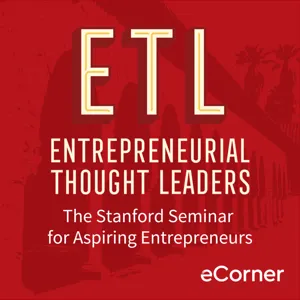Podcast Summary
Revolutionizing Manufacturing with Affordable Robots and Open-Source Software: The convergence of affordable robots and open-source software is revolutionizing manufacturing in the US, making it more cost-effective and accessible, leading to the automation of jobs and potential for net positive employment growth.
The convergence of cheaper and easier-to-integrate robots and open-source software is revolutionizing manufacturing, particularly in the US, by making it more cost-effective and accessible than ever before. This trend, which started around 2011, is leading to the automation of jobs that were previously done by low-wage labor in countries like China. The robots in question, such as the UR10 collaborative robot, are becoming increasingly affordable, with prices starting at $35,000, and are designed to be safer for workers with features like forced sensing. The software side of the industry is also evolving rapidly, with new systems like Ross robot operating system becoming more accessible and open-source. While there are still challenges to be addressed, such as improving reliability, the potential for this technology to transform manufacturing and create a net positive of jobs in the US is significant.
Robotics projects in 3D printing can be treated as software projects: Robotic arms like Universal Robots increase productivity and profitability through machine tending. Affordable options like MakerBot Replicator 2s and open-source libraries make robotics accessible for beginners.
Robotics projects, specifically in the context of 3D printing, can be treated as software projects due to the ease of use and integration of robotic arms. The use of robotic arms, such as Universal Robots, allows for machine tending of high-value equipment, enabling increased productivity and profitability. The specific choice of using MakerBot Replicator 2s as 3D printers is due to their familiarity and affordability, following the trend of commoditized desktop printers that emerged around 2007. For those interested in getting started with robotics, affordable robotic arms and open-source libraries are accessible options to explore the field.
Robotics: Simulation and Self-Learning: Robotics is advancing rapidly, focusing on simulation and self-learning. Simulation enables robots to learn and teach themselves through video demonstrations. Two paths in robotics: intellectual curiosity for problem-solving or practical, hands-on approach for industrial automation.
Robotics is rapidly advancing, with a focus on simulation and self-learning. Software and tools have improved significantly over the past two decades, allowing for more complex tasks and objectives. Simulation is a key area of development, enabling robots to learn and teach themselves through video demonstrations. While there are robot arms with grippers that mimic human hands, none have fully replicated the dexterity and precision of a human hand. For those interested in robotics, focusing on research and development related to training robots through simulation, particularly in the area of human dexterity, is a high-value and interesting path. Alternatively, there is a demand for industrial automation experts who can build machines to perform repetitive tasks efficiently and cost-effectively. The robotics field offers two distinct paths: one for the intellectually curious, focused on solving new problems, and another for those who prefer a more practical, hands-on approach. Daniel, in his work with AI grants, has encountered various projects in these areas.
Decentralized research lab funds robotics projects in simulation: AI Grant supports robotics research in simulation, enabling advancements in visual understanding and learning tasks. Safety concerns persist as advanced AI capabilities remain uncertain.
AI Grant, a decentralized research lab, is funding numerous robotics projects primarily in simulation, allowing researchers to apply for grants with minimal resources. These projects involve teaching AI systems to understand visual data and learn tasks through imitation or goal maximization. While the goal of creating a truly end-to-end system that functions in the physical world has yet to be achieved, the potential risks of AI, even with simple goal functions, are a concern. Researchers are actively exploring ways to ensure AI safety, as the potential consequences of advanced AI capabilities are still uncertain.
Regulating Artificial General Intelligence: A Complex Issue: Despite concerns about AGI, there are more pressing threats to humanity like weaponized dumb AI and non-deterministic machine learning. AGI's regulation is complex due to global involvement and potential harm to humans. Progress in AI is ongoing, but training for dealing with moving robots has yet to begin.
The regulation of Artificial General Intelligence (AGI) is a complex issue with no clear solution, as it's not clear how to make it global and ensure that all brilliant minds are involved. The speaker believes that there are more pressing threats to humanity than AGI, such as weaponized dumb AI and the increasing use of non-deterministic machine learning in various industries. The speaker also mentions the potential for AGI to harm humans in ways we've seen with less intelligent beings and expresses skepticism about finding a definitive answer. The acquisition of Kiva by Amazon is mentioned as an example of how progress in certain areas can be slowed down, and the speaker notes that the use of autonomous vehicles and robots is on the rise but that the training process for dealing with moving robots has not yet begun in earnest.
Automating warehouse operations with robotics: Robotics in warehouses leads to efficiency gains and easier scalability, with companies like Kiva focusing on pick and pack tasks. Future manufacturing involves smaller, semi-local factories and evolving 3D printing materials.
Automating warehouse operations through robotics offers significant efficiency gains and easier scalability compared to human labor. Kiva, for instance, specializes in warehouse robotics, focusing on tasks like pick and pack. Scaling up to larger warehouses, such as a 100,000 square foot facility, is more about engineering challenges, like the number of required robotic arms and AWS servers, rather than hiring and managing a large workforce. The future of manufacturing, as exemplified by companies like voodoo, involves building smaller, semi-local factories, which is easier with robots than humans. The materials used in 3D printing are also expected to evolve beyond plastic, offering new possibilities for manufacturing.
Addressing Challenges in 3D Printing with Digital Manufacturing Infrastructure: 3D printing faces limitations in material capabilities, cost-effectiveness for large objects, and IP protection, especially in China. Voodoo aims to tackle these issues through digital manufacturing infrastructure, focusing on smaller consumer goods and various technologies beyond 3D printing.
While 3D printing technology has advanced significantly, it still faces limitations in terms of material capabilities, cost-effectiveness for large objects, and intellectual property protection, particularly in countries like China. Voodoo aims to address these challenges by building an infrastructure for digital manufacturing, which includes various technologies beyond 3D printing. The future of having a 3D printer in every home producing most household items is not yet a reality, as most objects consist of multiple materials and require assembly. Instead, the next wave of digital manufacturing will likely focus on smaller consumer packaged goods. The cost of producing large objects through 3D printing remains prohibitive due to slow extrusion rates and the need for expensive machinery. Intellectual property protection in China is culturally different, and sharing information is more common. Companies must consider these factors when manufacturing in China.
IP may not effectively protect hardware innovations: Companies need to focus on rapid iteration and partnerships to stay ahead of competition. 3D printing's accessibility and affordability make it a growing trend in various industries.
Intellectual property (IP) may not be as effective in protecting hardware innovations as it once was. With hardware becoming increasingly easier to replicate, companies may need to focus on rapid iteration and working with partners like Voodoo Manufacturing to stay ahead of the competition. Another key point is the growing potential for 3D printing in various industries, including education and solar energy. The accessibility and affordability of 3D printing technology are making it increasingly prevalent, and it's likely that it will continue to be incorporated into various sectors in the future. During their time at Y Combinator, the founders of Voodoo Manufacturing found value in the program's ability to help them define their company identity as a robotics company, which sits at the intersection of hardware and software. Overall, these discussions highlight the importance of adaptability and innovation in the face of rapidly evolving technologies.
Navigating a larger team as a startup: Clear role definitions and long-standing relationships can help a startup team avoid conflicts and build a cohesive unit, even in a four-person team. Recruit co-founders based on compatibility and shared goals.
Having a cohesive team with clearly defined roles can be beneficial for a startup, even if the team is larger than a solo founder. The founders of Voodoo, who met in college and started a company together, shared their experience of navigating the challenges of a four-person team. They found it helpful to attend YCombinator on different weeks, allowing some members to focus on building the business while others represented the company and received advice. The team's long-standing relationship and clear role definitions have helped them avoid common issues like ownership disputes and interpersonal conflicts. When recruiting co-founders, they emphasized the importance of compatibility and shared goals, even if the founders weren't close friends before starting the company.
Finding a co-founder based on shared interests: When looking for a co-founder, prioritize finding someone who could become a good friend. Shared interests and hobbies can lead to a stronger partnership.
When looking for a co-founder, it's important to find someone who could become a good friend, rather than just focusing on their technical capabilities. This shared connection can lead to a stronger and more enjoyable partnership. The speaker, Daniel, shared his experience of starting a company with his co-founders Oliver and John, who are now his best friends. He mentioned that they bonded over shared interests and hobbies, which helped them spend long hours together during the stressful startup process. Daniel also mentioned that he wasn't their first choice for a co-founder, but that it worked out well due to the timing and their shared interests. He encouraged founders to keep this in mind when searching for a co-founder, and to prioritize finding someone who could be a good friend, even if they aren't the most technically competent person. Daniel also mentioned that he and his co-founders have learned many valuable lessons since leaving Y Combinator, but one important one is to stay focused on the long-term vision and not get distracted by short-term setbacks or challenges.
Motivating Your Team During the Post-Y Combinator Period: Setting public deadlines, utilizing PR and media, and organizing internal demo days can help maintain momentum and motivation within a team during the fundraising process after Y Combinator.
The Y Combinator experience can be intense and demanding, and it's essential for founders to maintain momentum and motivation within their team, even during the fundraising process. Pragmatic measures such as setting public deadlines, utilizing PR and media, and organizing internal demo days can serve as effective motivational tools. Additionally, larger companies may find it helpful to implement these strategies to keep their teams focused and engaged. Overall, the post-Y Combinator period can present unique challenges, but with the right mindset and tactics, founders can continue to drive growth and innovation.






